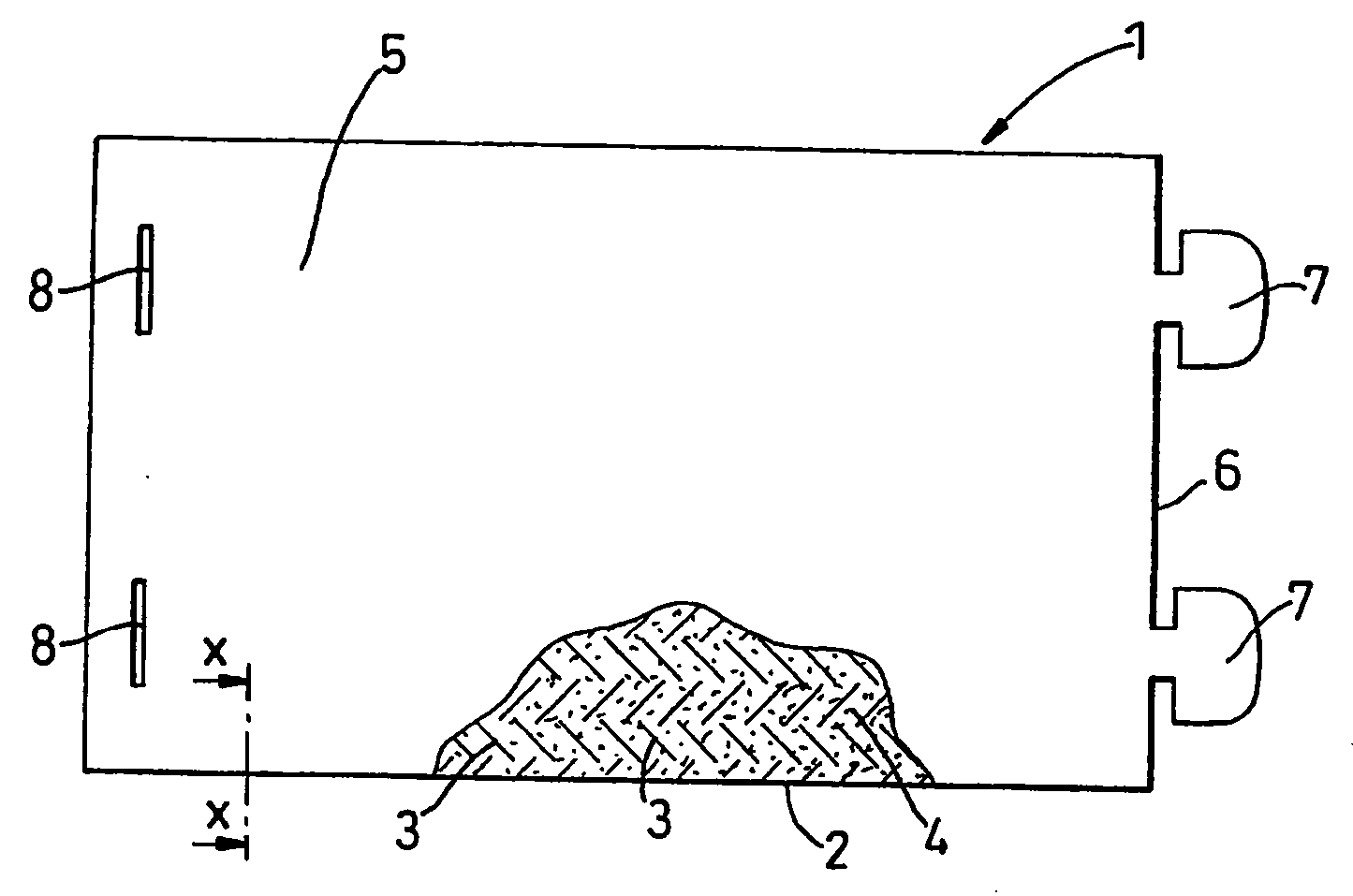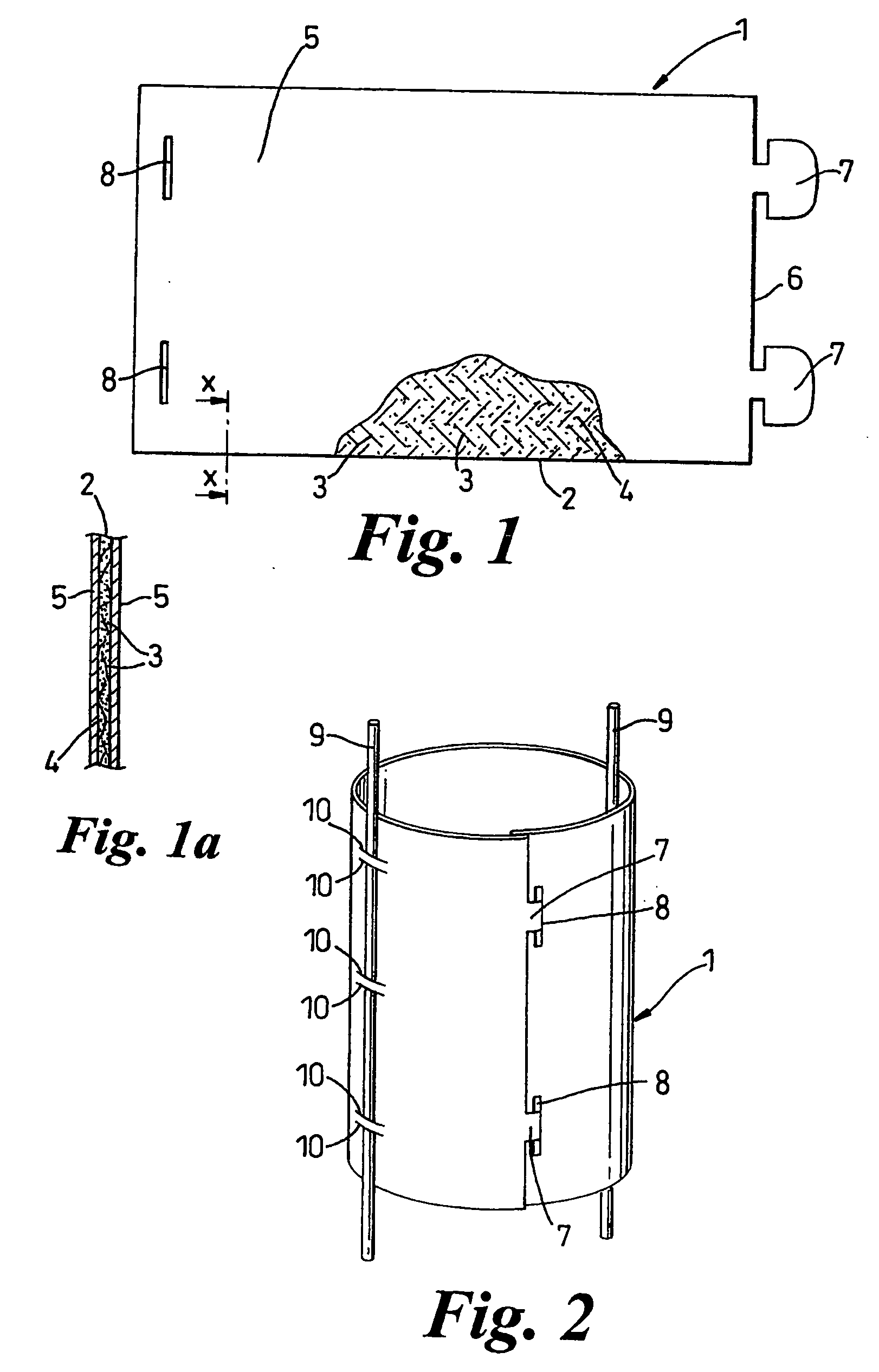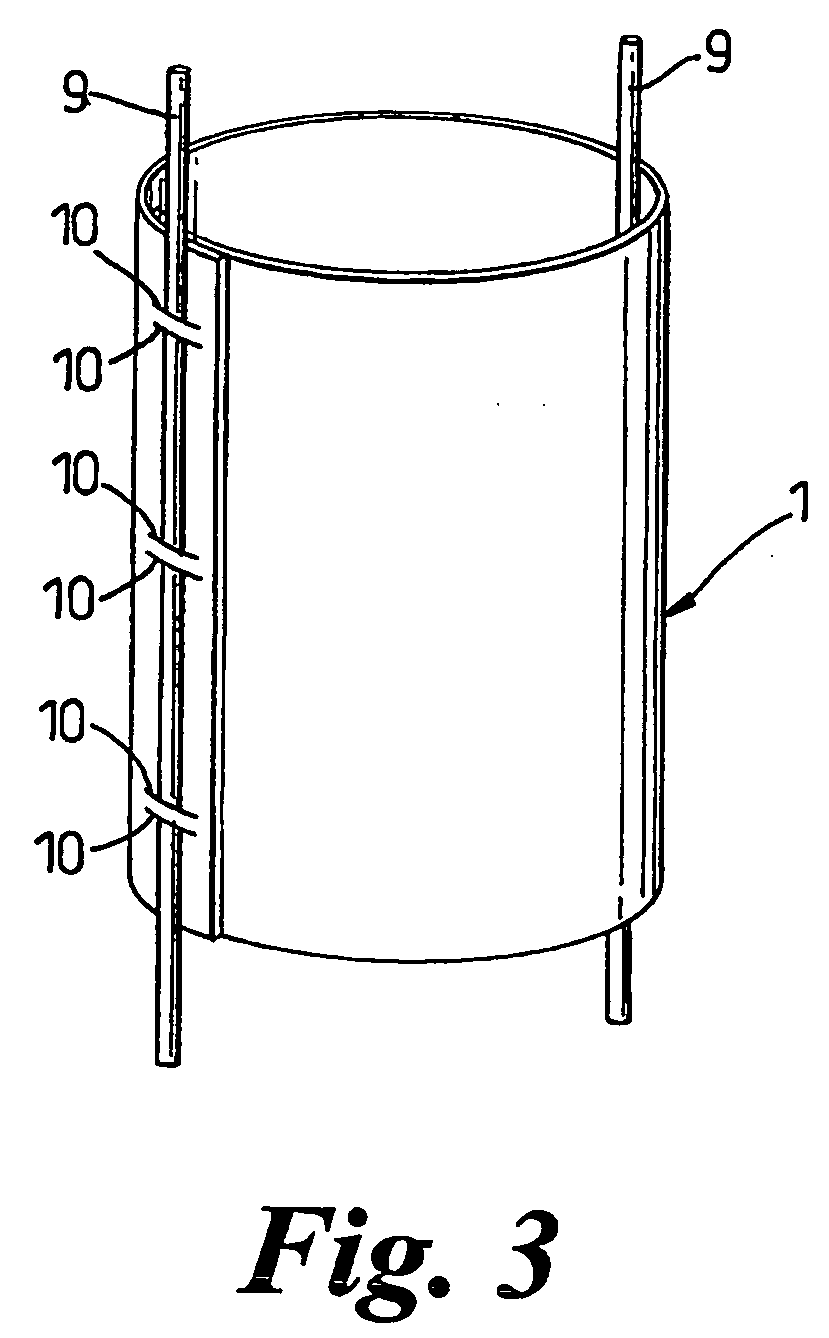Tree shelter
- Summary
- Abstract
- Description
- Claims
- Application Information
AI Technical Summary
Benefits of technology
Problems solved by technology
Method used
Image
Examples
first embodiment
[0054] In a first embodiment as shown in FIGS. 1 and 2, along one of the shorter edges of the panel 6 are formed two spaced, projecting tabs 7 and along the opposing edge are cut two slits 8 that correspond to the positions of the tabs 7 so that when the panel 6 is rolled up, each tab 7 can be inserted into a corresponding slit 8 to retain the panel 4 in a rolled state, as shown in FIG. 2. The tabs 7 have been shaped for this purpose by being made spoon-shaped, as shown in FIG. 1, in known fashion so that once inserted into the slits 8 they cannot easily be pulled out of position.
[0055] Alternatively, the tabs 7 could be made arrow-shaped.
[0056] The rolled-up panel 6 shown in FIG. 2 has been provided with two stakes 9. These stakes 9 may be fastened to the panel 6 by weaving the stakes 9 through slits 10 cut appropriately in the panel 4 for this purpose. Both of the stakes 9 are used to anchor the shelter 1 to ground and one of them may also be secured to the plant being protected,...
second embodiment
[0057] In a second embodiment, as shown in FIG. 3, the mat is cut into a rectangular panel that is provided with a plurality of slits similar to the slits 10 along two opposing edges. When the panel is rolled up, a stake 9 can be woven through the slits 10 in the overlapping portion of the panel to retain the shelter 1 in a rolled-up state before being pushed into the ground as an anchor. No additional fixing mechanism to retain the shelter in a rolled state is therefore required in this embodiment.
[0058] It will be appreciated that in use, the tree shelter 1 of the invention is stored and transported in panel form and only assembled into a rolled-state on site. This facilitates the storage and transportation of the shelter 1 as compared to conventional shelters which are usually manufactured in a tubular form.
[0059] In use, as shown schematically in FIG. 4, the shelter 1 is staked to the ground close to a tree or plant 11, such as a sapling, and then rolled up around the stem or t...
PUM
 Login to View More
Login to View More Abstract
Description
Claims
Application Information
 Login to View More
Login to View More - R&D
- Intellectual Property
- Life Sciences
- Materials
- Tech Scout
- Unparalleled Data Quality
- Higher Quality Content
- 60% Fewer Hallucinations
Browse by: Latest US Patents, China's latest patents, Technical Efficacy Thesaurus, Application Domain, Technology Topic, Popular Technical Reports.
© 2025 PatSnap. All rights reserved.Legal|Privacy policy|Modern Slavery Act Transparency Statement|Sitemap|About US| Contact US: help@patsnap.com



